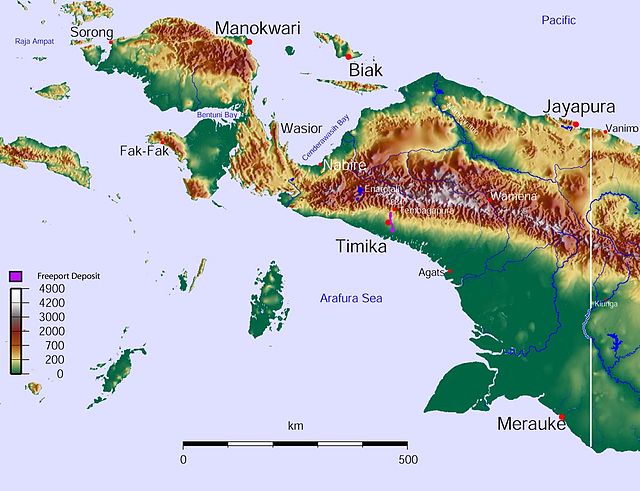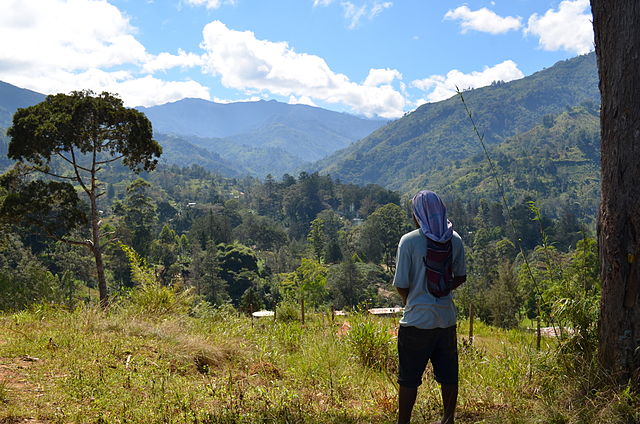Western New Guinea, also known as Papua, Indonesian New Guinea, and Indonesian Papua, is the western, Indonesian half of the island of New Guinea, granted to Indonesia in 1962. Given the island is alternatively named Papua, the region is also called West Papua.
The lowland rainforest of the Western New Guinea
The rugged and mountainous topography of Western New Guinea.
The king bird-of-paradise is one of over 300 bird species on the peninsula.
Logo of Papuan People's Assembly, a special organization in Papua Province composed of native Papuans to enforce the special autonomy.
New Guinea is the world's second-largest island, with an area of 785,753 km2 (303,381 sq mi). Located in Melanesia in the southwestern Pacific Ocean, the island is separated from Australia by the 150-kilometre wide Torres Strait, though both landmasses lie on the same continental shelf, and were united during episodes of low sea level in the Pleistocene glaciations as the combined landmass of Sahul. Numerous smaller islands are located to the west and east. The island's name was given by Spanish explorer Yñigo Ortiz de Retez during his maritime expedition of 1545 due to the resemblance of the indigenous peoples of the island to those in the African region of Guinea.
Mount Bosavi
Highlands of Papua New Guinea
Yali tribesman in the Baliem Valley
Yali Mabel, Kurulu Village War Chief at Baliem Valley








